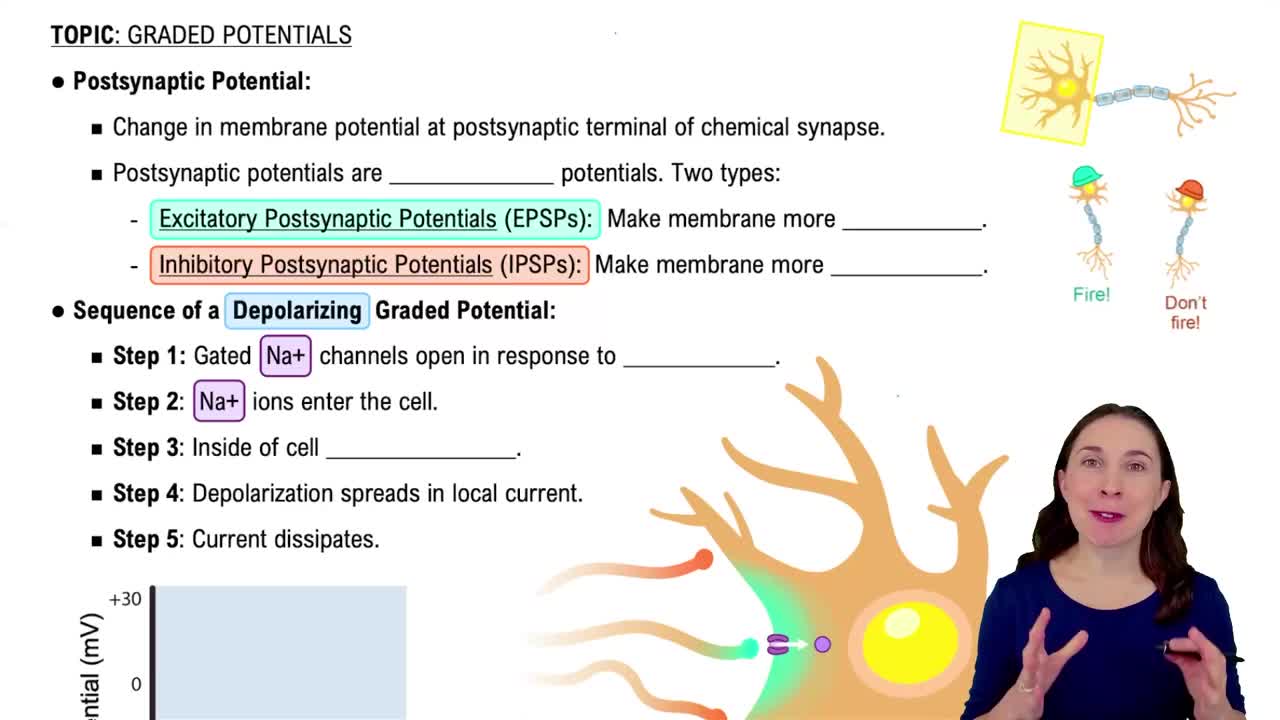Textbook Question
Briefly explain how nerve impulses are initiated and transmitted, and why conduction at synapses is always one-way.
685
views
 Verified step by step guidance
Verified step by step guidance Verified video answer for a similar problem:
Verified video answer for a similar problem:



 5:55m
5:55mMaster Postsynaptic Potential with a bite sized video explanation from Bruce Bryan
Start learning